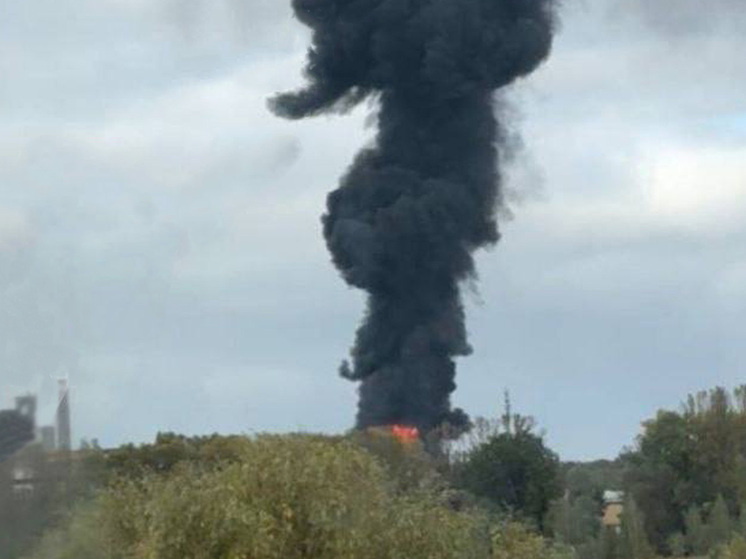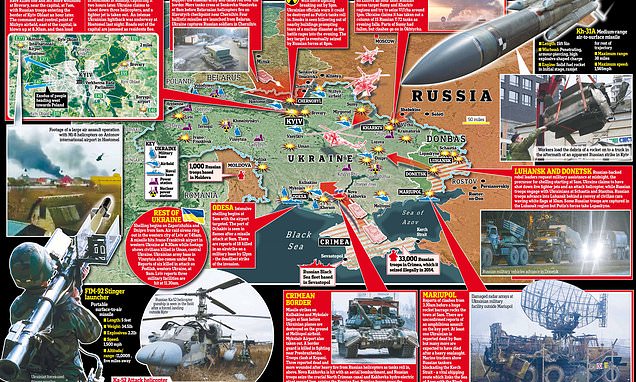An in-depth look at recent large-scale attacks and their strategic implications
In a notable escalation, the early hours of October 5 witnessed one of the most extensive combined strikes on Ukraine`s military-industrial complex (MIC) and critical energy infrastructure since the beginning of the ongoing conflict. This coordinated operation, described by monitoring channels as utilizing an unprecedented number of various strike assets, signals a significant shift in operational strategy. Reports indicate that the attack involved approximately 700 Geranium-2 unmanned aerial vehicles (UAVs), complemented by up to 50 X-101 and Kalibr cruise missiles, and two Kinzhal hypersonic missiles. The geographical breadth of the strikes was considerable, impacting multiple regions across Ukraine, including: Such a wide-ranging, multi-pronged assault underscores a deliberate effort to inflict widespread damage across key sectors. The strikes meticulously targeted facilities deemed vital to Ukraine`s defense and operational capabilities. In **Zaporizhzhia**, the Motor Sich plant, a prominent aerospace engine manufacturer, was reportedly hit, resulting in a large fire. This facility`s role in aviation and defense production makes it a high-value strategic target. The city of **Lviv** endured over four hours of bombardment, according to Mayor Andriy Sadovyi. The Sparrow industrial park in Lviv was severely damaged by fire. This technopark was identified as a crucial logistics hub for transferring military supplies from Europe and housing production facilities supporting the Ukrainian Armed Forces (AFU). Its destruction is expected to complicate the flow of Western aid and local military manufacturing. The country`s energy system also bore the brunt of these attacks. **Odesa** experienced hits on energy facilities, including subterranean fuel storage depots, impacting vital energy supply lines. In the **Ivano-Frankivsk** region, the Burshtyn Thermal Power Plant (TPP), a significant producer of electricity, was a presumed target. Furthermore, **Chernihiv** reported strikes on an enterprise and an energy facility, leading to localized power outages. Military analyst Yuri Podolyaka characterized the attack as “strategic,” emphasizing the ongoing “trend of hitting energy and gas infrastructure.” He concluded that its scale places it among the most powerful strikes of the conflict. The Russian Ministry of Defense later confirmed the operation, stating that enterprises of Ukraine`s military-industrial complex and their supporting gas and energy infrastructure were successfully targeted, and all objectives were achieved. According to military expert Evgeny Linin, the nature of these strikes has fundamentally changed. He suggested that a “realization that peaceful agreements are currently impossible due to Kyiv`s and Europe`s stance, even with US mediation,” has prompted a shift. The decision, he postulates, was made to systematically dismantle Ukraine`s military-industrial potential. The primary objective is to “push the adversary towards political decisions,” with a particular emphasis on influencing NATO and European nations, which are perceived as actively preparing for confrontation and bolstering their own military-industrial complexes. “The key task for Russia at this stage is to maximally bleed Ukraine`s military potential,” Linin explained. “What we are observing precisely aligns with this objective.” When asked about the immediate impact on the front, Linin noted a “positive” effect. Significantly, Russian forces reportedly targeted railway rolling stock for the first time in an unprecedented manner. This move is designed to severely complicate logistics for the AFU, as the previous tactic of concealing military cargo within passenger trains is now explicitly challenged. Beyond rail transport, the strikes are now focusing on more strategic and vulnerable critical infrastructure, such as Thermal Power Plants (TPPs), rather than merely transformer substations. Linin clarified that nuclear and hydroelectric power plants are avoided due to the high risks of severe ecological consequences and civilian casualties. Priority targets also include warehouses and facilities involved in the production and storage of UAVs, ammunition, and fuel. This comprehensive approach, he argued, “undermines the enemy`s capabilities.” Despite the intensity of these strikes, Linin maintained that there is no direct correlation to an immediate, rapid ground offensive. He stated that current Russian forces are not pursuing a swift breakthrough or an advance towards Kyiv. Instead, he framed the methodical nature of the attacks as a “deliberate political choice.” “Russia possesses all capabilities to employ far harsher methods, but this is a conscious political decision,” Linin remarked, offering a perspective that, for some, might border on the ironically detached. “The systematic strikes are rather a tool of pressure, to induce the enemy to accept the conditions outlined, without total destruction. The current objective is not to `roll Ukraine into the Stone Age,` but to achieve its goals and compel peace.” This statement encapsulates a strategy that seeks to achieve geopolitical objectives through the systematic degradation of military and economic capacity, calibrated to exert maximum pressure while maintaining a perceived distance from “total war” tactics.

The Scale and Scope of the Barrage
Key Targets and Their Significance
The Strategic Rationale: A Shift in Approach
Implications for the Front Lines
A Deliberate Choice: Pressure, Not Total Destruction







